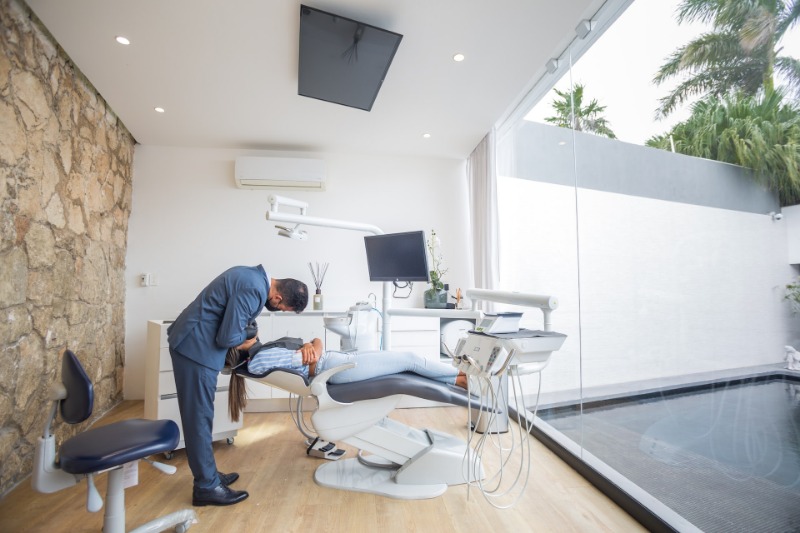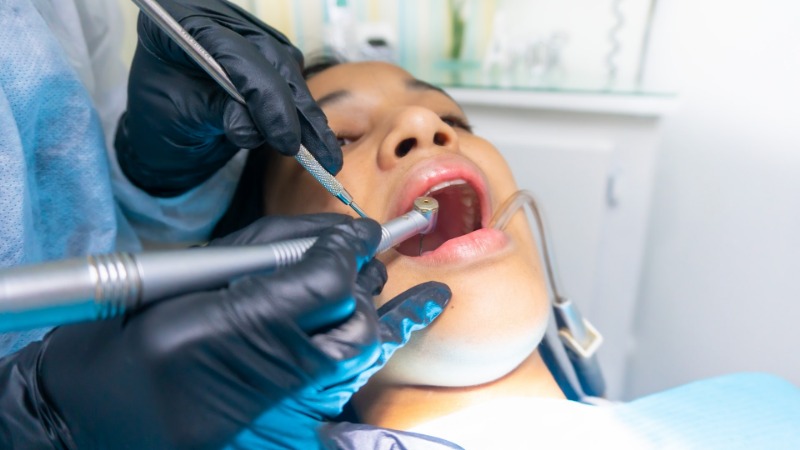How to Prevent Dry Socket?

To put it in simple words, a blood clot, the right kind, forms to guard the bone and nerves at your tooth removal site. At times, however, the clot can become dislodged and not cure appropriately. This is a dry socket. It permits the nerves and bones to go undefended from bacteria leading to considerable pain and uneasiness. A dry socket also slows down the healing process. Don’t panic! See your dentist right away. You must be now wondering to know what causes dry sockets. Let’s discuss this.
Dry Socket Causes by Dentist Burbank
The primary cause for dry sockets is the partial or total loss of a blood clot in the tooth socket after tooth extraction. Generally, after a tooth extraction, a blood clot forms as the first step in healing to cover and shield the underlying jawbone. If the blood clot does not form, the bone is uncovered and healing does not happen on time.
In most cases, a dry socket is a consequence of bacterial, mechanical, chemical, and physiologic factors. Let’s explain with a few examples:
Bacterial: Preexisting contamination that is present in the mouth earlier to a dental extraction such as periodontal disease can put off the proper formation of a blood clot. Certain oral bacteria can lead to the breakdown of the clot.
Mechanical: Sucking through a straw, spitting, forceful rinsing, or dragging on a cigarette may lead to dislodgement and loss of the blood clot.
Chemical: Nicotine used by smokers leads to a drop-off in the blood supply in the mouth. Consequently, the blood clot may be unsuccessful in informing the site of recent tooth extraction.
Physiologic: Dense jawbone, Hormones, or poor blood supply are factors that check blood clot formation.
Symptoms of Burbank Dry Socket

- A hurting stable pain presents a few days after tooth extraction
- The soreness may give off to other parts of the head such as the ears and eyes on the same side of the face
- Bad breath can happen due to the growth of food debris and bacteria in the socket
Dry Socket: How Is It Diagnosed?
The history of dental treatment, clinical examination, and the individual’s symptoms are primarily taken into consideration. When symptoms start on, it is an indicator of a dry socket. During normal healing, the uneasiness of extraction should lessen in due course. However, if the pain swells, this is a sign that healing is delayed and could probably be due to a dry socket. Normally, symptoms grow for two to four days following tooth extraction. Mostly it happens within the first week subsequent to tooth extraction.
Treating a Dry Socket
Suffering from a dry socket? Don’t delay! Call at MyDentistBurbank right away. Dr. Sahakyan may recommend you take a non-steroidal anti-inflammatory drug (NSAID), such as aspirin or ibuprofen, to relieve the uneasiness. However, at times, these over-the-counter medications aren’t enough to relieve the pain. In such cases, Dr. Sahakyan may prescribe a stronger drug or will anesthetize the area and clean the tooth socket; he would remove any debris from the hole, and then fill the socket with a medicated dressing to help to heal. He may ask you to drop in after a few days for a dressing change until the socket starts to cure and your pain reduces.
Dentists at MyDentistBurbank may prescribe antibiotics to stop the socket from becoming contaminated. To care at home, your dentist may advise you to rinse with salt water or a special mouthwash every day.
Call us today at 8185782332 to book an appointment for Burbank Dry Socket treatment!


